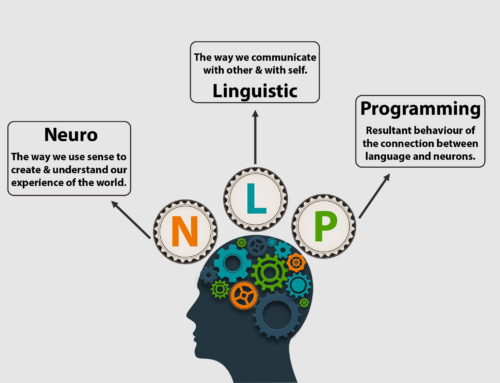When I consider sitting with my clients, I ask the question ‘What is the difference between how I sit with them and how I sit with a friend?’ I talk with them, I listen to them, I spend time with them, and I even care about them. Nevertheless, it is many years of training and practice that has taught me how to sit with the client therapeutically.
When I work with a client, I do exactly that. It is an intentional activity. There is a reason for them coming to see me and we are on a journey together. I do not sit there submissively listening or hoping that the fact that I am with them will somehow lead to a deep realization or epiphany. No, I try to understand the implications of their words and I may link statements with previous sessions. When one of my clients speaks about an early traumatic incident, my experience may lead me to working with their parasympathetic nervous system. When another client speaks about a fear of death and feeling like time is running out, I explore the existential anxieties they may have and what effect it is having on their life.
In my clinical work I allow myself to truly enter my client’s world. I see myself as being a part of their world, it is invaluable for me to use my own reactions. My belief is that to be of benefit to a client we must create an environment that nurtures the relationship, one that gives the client faith in the process as well as themselves.
Just as the client who sits with me is, I am inherently human and it is this ‘humanness’ that allows us to travel along the road together and to gain a deep understanding. This humanness shows (somewhat colourfully) the normal thoughts, misconceptions, fantasies, emotions, and mistakes a therapist like myself will make in a session, although at the heart of the matter is this relationship and a common purpose. Therefore, I also consider trust to be something that must be nurtured in therapy.
Throughout history, within cultures and societies there have been consistent beliefs that certain individuals possessed the power necessary to create change in an individual. Even in pre-historic rock art we can see depictions of healing ceremonies. There has always been those who are believed capable of entreating the higher powers to heal the sick and cast away the demons of the spirit. But what I do is not magic and sometimes I fear this belief is why people don’t come to see me. They think, “Sure, it is only talking.” “Therapists don’t really do anything.” “There is no real science.” (Actual comments I have heard). This is why I wish to take away some of the mystery, so I can show that there is a process, that we therapists do focus and work until we see a client change and become that person they wish to be. Although I must point out this is my way of working and there are numerous others.
Sometimes we all have moments when we feel like we are passive spectators to the life we are living. My role as a therapist is to help a person gain some control of the boat they are steering. The boat analogy has been used before but I see it in a different light. There are winds and waves that will move us along, change our direction, impeded our travels, but we must never forget that we are still steering. We cannot control the weather, just as we cannot control every aspect of life, but we can control how we respond. In the end, we decide how we will react and it is in this decision that we regain the control that we once had.
As a therapist, I may not be able to change a client’s world for them, but freedom may exist in helping them change their perception of that world and showing them the freedom and choice that they do possess. I do not see therapy as formal guidance, but its strength lies in its ability to open us up to new experiences and allow us to grow as well as to find our own understanding. Change and healing may then occur with how we can shape cognition, alter perception and change the way a person looks at the world and themselves.
The next question is “How do I do this?”
To start with I see my client as a whole. I wish to understand them by connecting with all the aspects that make them who they are: history, family life, hopes, dreams, fears, food, exercise, belief systems, work, parents, culture, gender, talents, relationships, etc. Gaining as much understanding about them as I can, with the aim of connecting every aspect of that person’s body, mind, spirit, and the emotions that they have and directing these powers to make the changes they need for the future. It should also be noted that it is important to allow for therapy to be introduced not just for the sole purpose of changing a particular behavior but also for allowing a client to work through any difficult issues in their life.
The next step I take is with “Agency thinking” (“I can do it”) and pathway thinking (“Here is how I can do it”). Here I take on the position of a motivating factor for the client. It is through therapy that the client is given the opportunity to work through their own issues with a person who will help inspire them to have a higher level of belief in themselves and in doing so also help them devise a plan to either remove themselves from their current situation or to perceive and act within it differently. Talking without effect is not going to work. What people tend to forget is that yes therapy is talking, but this is just a starting point, a way to bring the external world into a room and explore a new way of being. In the end work is done with experience, tests, empathic engagement, collaboration of goals, case planning etc, all grounded in science and practice. I help my client bring about change by bringing the client’s attention between external realities and internal possibilities in the room. In therapy a client is given the opportunity to raise self-esteem in an environment that affords a safe place to express emotion. The client possesses the hope that there is something that can be done for them. It is then by nurturing this hope and gathering their internal strengths and directing them towards the goal that allows them to find there is a power either within or without, and once accessed will accomplish the task.
How do we know what we are doing is right? Well we must test it and evaluate the outcomes, enter into the situation and see how it fits in the relationship. Therapy is able to excite the human capacity for self-healing, and it can reframe suffering situations or even boundary situations by altering the various dimensions of human life that are relevant to one’s health. Heightened emotions are expressed in the therapy room as both therapist and the client are in search for meaning and understanding. In fact all manner of dramas are enacted within the session. The therapy evokes past memories and places them within current context, some of which are of particular importance to the client in what shapes their perception of the world. Furthermore, each client develops their own therapy in conjunction with their therapist as they each discover what is important to them and how they view their interpersonal world.
This is what makes the therapy different and more effective than other everyday encounters. Within therapy there is a consensus for a transition, both the client and the therapist are aware of this. Therapy can be used as a transition that moves a client from one position in their life to another. The Latin for “Threshold” is Limen which is where liminal is derived and in this way therapy brings those involved to a threshold, whether it be allowing the client to see a new way life, to act differently, rekindle repressed emotions, experience a new relationship or any other moment of change. They are brought to the threshold of awareness that once crossed allows a person to experience a new way of being. It is the completion of this transition that may be the key to health and growth.
What happens next is Separation. The separation comprises the removal from the ordinary situation of life which causes disturbance; whether a client is talking about work family life, relationship, past traumas, issues that cause stress, they are no longer in that environment which they speak of. Even if it is couples therapy, the couple is still extracted from their consistent environment into a new social structure. In all therapies the client goes through the threshold or liminal experience as they confront their past experiences within the therapy session. Finally reincorporation occurs where the client returns to their previous environment having experienced a new way of being. It is not claimed that this is a singular event that once completed releases the client of all their issues, however it is the stages which the client continuously passes through within the therapy setting until they have successfully navigated the past experience/trauma and created a new state of being.
Therapy is a process that transverses what a person believes they can accomplish and leads them down a path that was previously obscured. It is by no means simplistic, it requires a therapist to focus upon rigorous training and experience. It then entails the meeting of two minds and emotions to come to awareness. It is only when a therapist finally gathers the attention and focus of a client that they can then proceed to focus this attention on their life, their issues and their pain. When a person is capable of perceiving a new way of being then change will begin to occur. But first they must learn to perceive a better self and it is through using this potent internal power of perception that a client loosens the shackles that once held them.
“We shall not cease from exploration. And the end of our exploring will be to arrive where we started and know the place for the first time”
T.S. Eliot: ‘Little Gidding’







